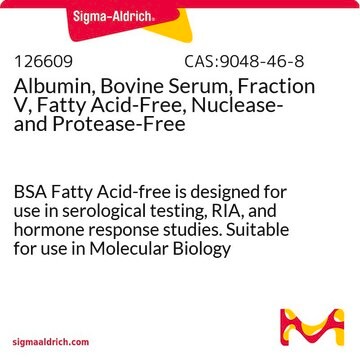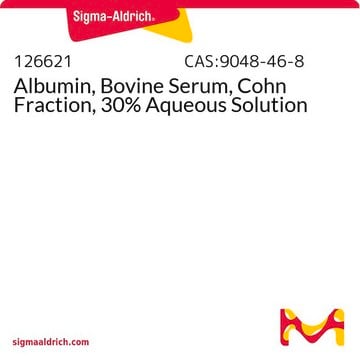126575
Albumin, Bovine Serum, Fraction V, Fatty Acid-Free
Sinónimos:
Albumin, Bovine Serum, Fraction V, Fatty Acid-Free
About This Item
Productos recomendados
assay
≥95% (cellulose acetate electrophoresis)
form
powder
manufacturer/tradename
Calbiochem®
storage condition
OK to freeze
impurities
≤0.02% fatty acids
≤3% ash
≤5% moisture
color
white to light yellow
light yellow to light brown
shipped in
ambient
storage temp.
2-8°C
Categorías relacionadas
General description
Application
- as a component of: blocking buffer immunoelectron microscopy (IEM) for various cells
- mitochondrial isolation buffer (MIB) and mitochondria assay solution (MAS) to trap free fatty acids released during adipose tissue homogenization
- blocking buffer for wholemount staining of the esophageal epithelium (EE) in immunofluorescence
Biochem/physiol Actions
Warning
Preparation Note
Reconstitution
Legal Information
Storage Class
11 - Combustible Solids
wgk_germany
WGK 3
flash_point_f
Not applicable
flash_point_c
Not applicable
Certificados de análisis (COA)
Busque Certificados de análisis (COA) introduciendo el número de lote del producto. Los números de lote se encuentran en la etiqueta del producto después de las palabras «Lot» o «Batch»
¿Ya tiene este producto?
Encuentre la documentación para los productos que ha comprado recientemente en la Biblioteca de documentos.
Los clientes también vieron
Artículos
Learn about the impact of filtration on hematopoietic cell culture media containing vital T cell factors and other media components.
16HBE14o- human bronchial epithelial cells used to model respiratory epithelium for the research of cystic fibrosis, viral pulmonary pathology (SARS-CoV), asthma, COPD, effects of smoking and air pollution. See over 5k publications.
Nuestro equipo de científicos tiene experiencia en todas las áreas de investigación: Ciencias de la vida, Ciencia de los materiales, Síntesis química, Cromatografía, Analítica y muchas otras.
Póngase en contacto con el Servicio técnico







